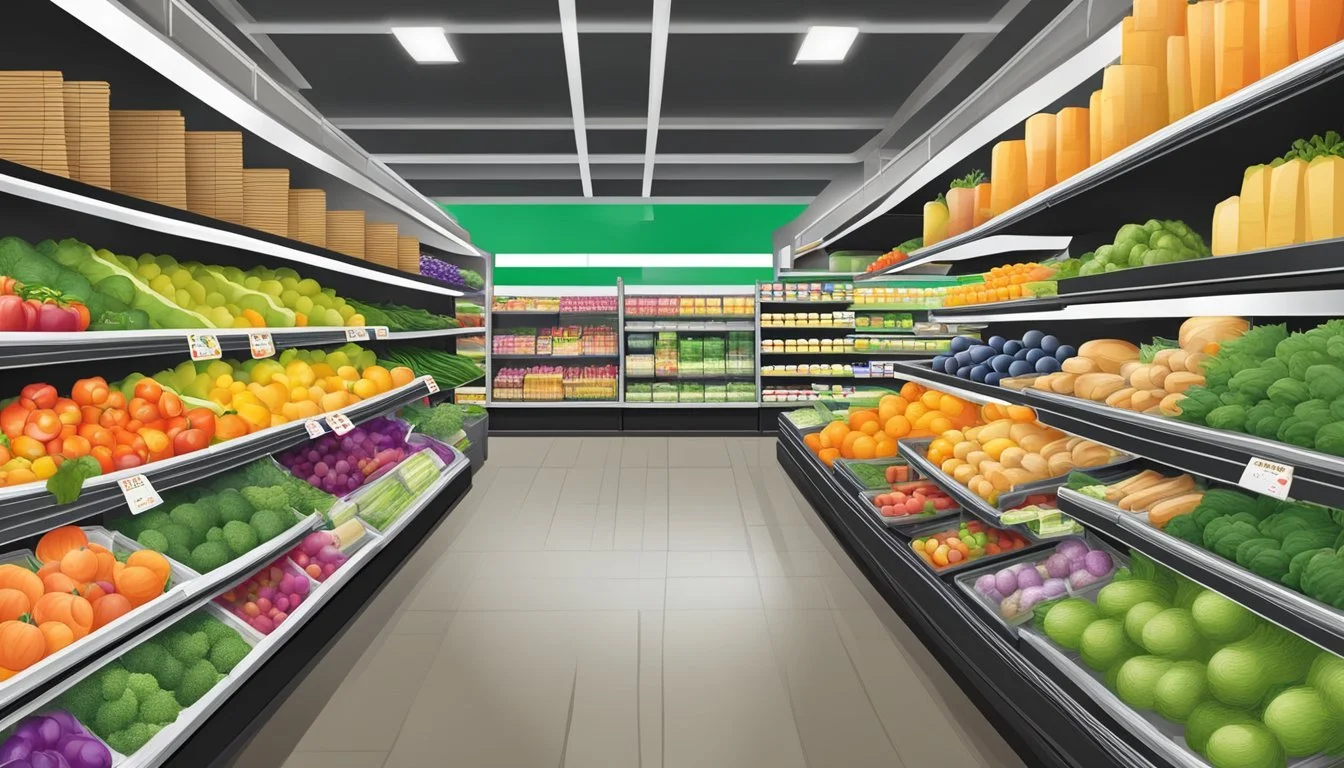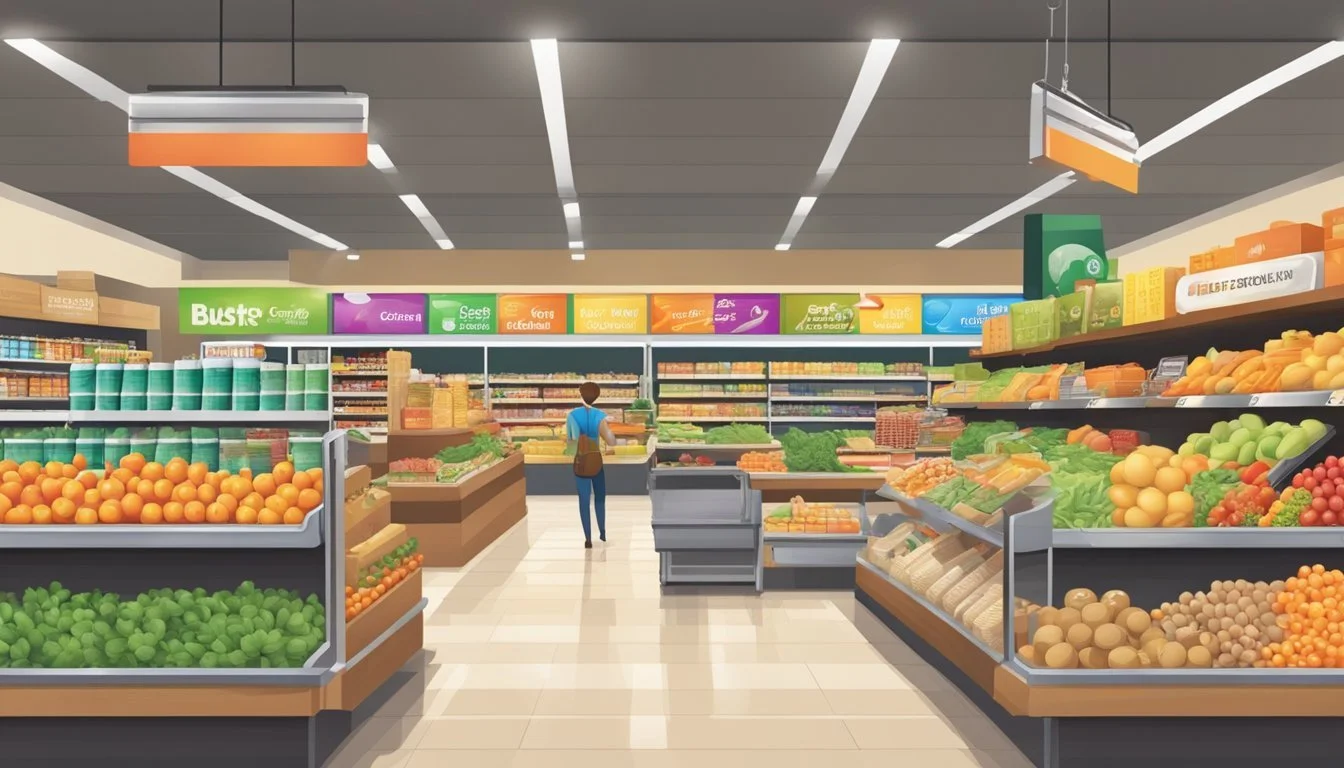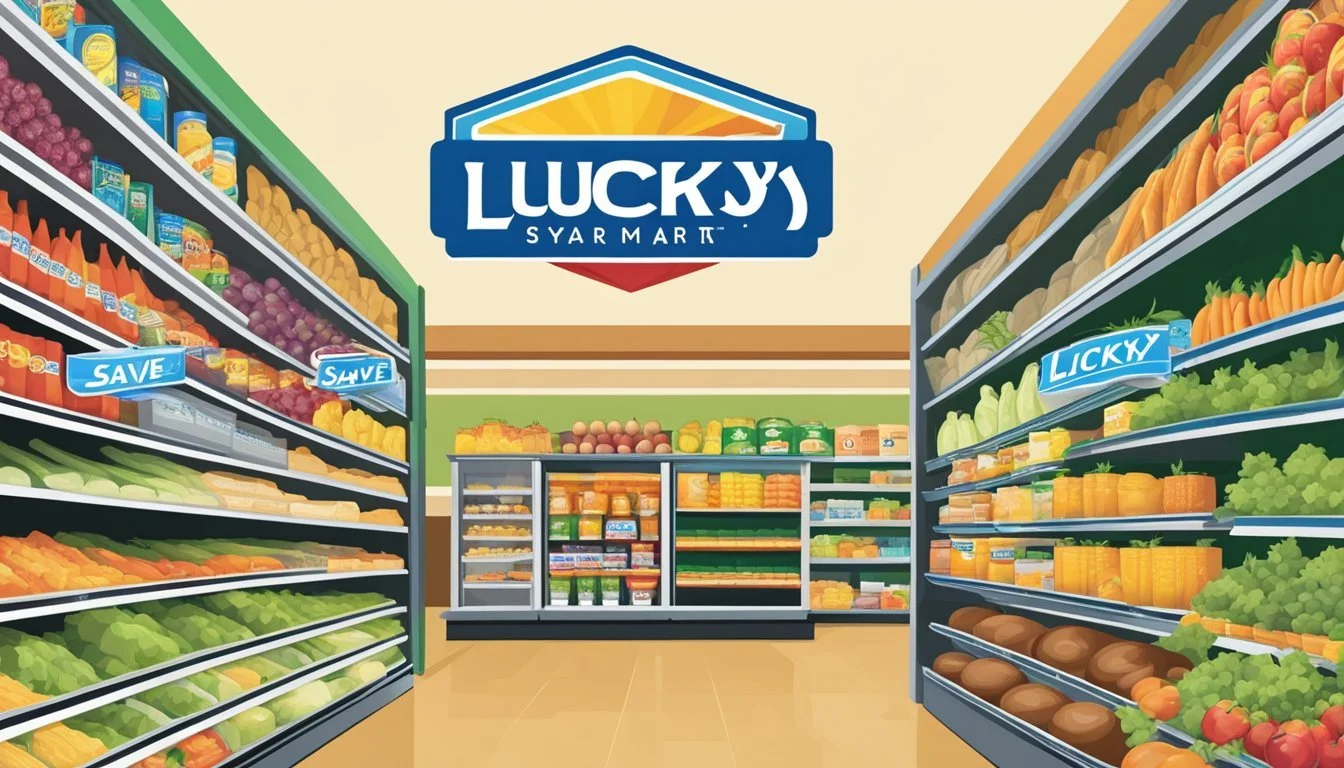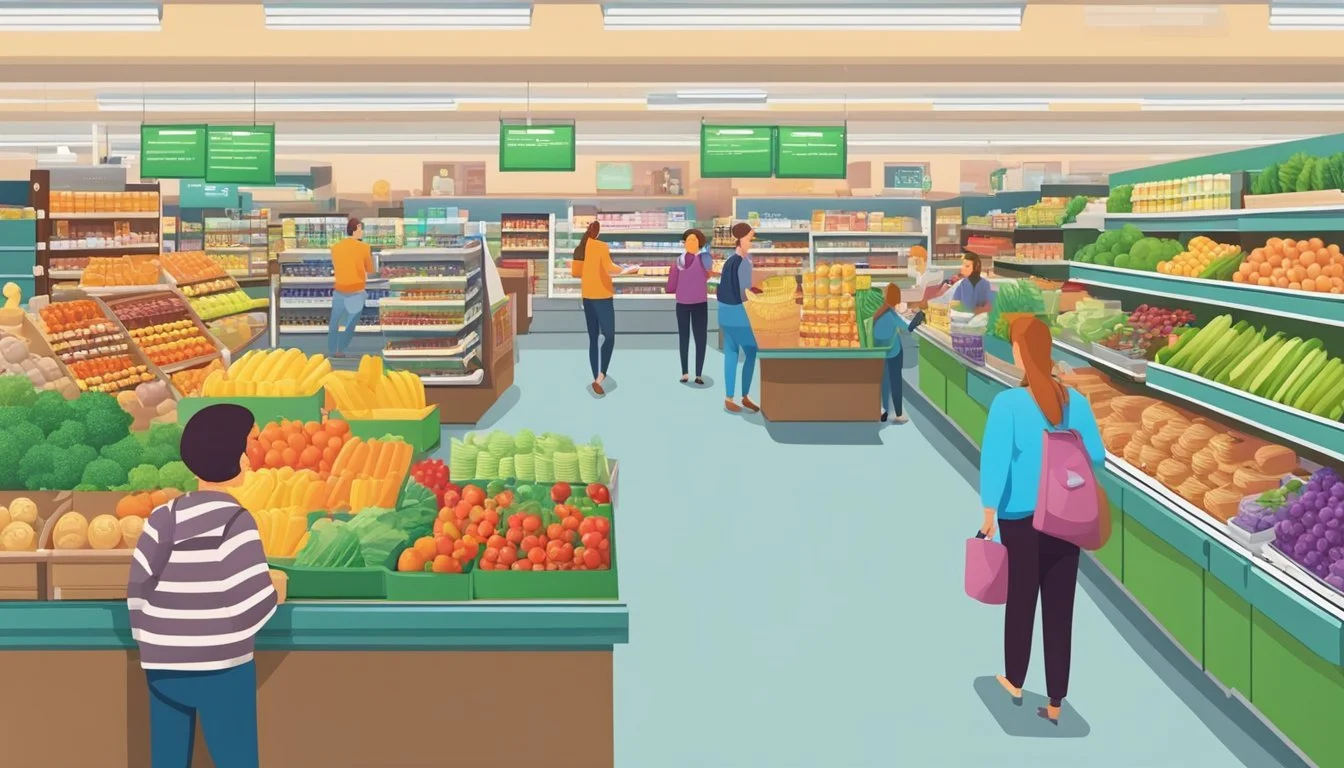Lucky Supermarkets vs Save Mart
A Comprehensive Comparison of Prices, Selection, and Service
Lucky Supermarkets and Save Mart are two prominent grocery chains serving Northern California. Both offer a wide selection of products and competitive prices, making them popular choices for shoppers in the region. While the stores share some similarities, they also have distinct features that set them apart.
Save Mart Supermarkets operates stores under the Save Mart, Lucky, and FoodMaxx brands, catering to different segments of the market. This multi-brand approach allows the company to serve a diverse customer base with varying preferences and budgets. Lucky Supermarkets, originally founded as a separate chain, is now part of the Save Mart family in Northern California.
The choice between Lucky Supermarkets and Save Mart often comes down to personal preferences, location convenience, and specific shopping needs. Factors such as product selection, pricing, store layout, and customer service can influence a shopper's decision. By examining these aspects, consumers can determine which grocery store better suits their individual requirements.
Corporate Background and Expansion
Lucky Supermarkets and Save Mart have distinct histories and expansion paths that have shaped their current market positions. Both chains have deep roots in California and have undergone significant changes in ownership and structure over the decades.
Lucky Stores History
Lucky Stores began in San Leandro, California in 1935. The chain rapidly expanded throughout Northern California and the Bay Area in the following decades. By the 1980s, Lucky had become a major grocery presence in the region.
In 1998, Albertsons acquired Lucky Stores and rebranded the locations. However, Save Mart later purchased many former Lucky locations from Albertsons in 2007. Save Mart then revived the Lucky brand name in the Bay Area, bringing back a familiar presence to many shoppers.
Today, Lucky operates 61 stores primarily in the San Francisco Bay Area and parts of the Central Valley.
Save Mart Companies Evolution
Save Mart's story began in 1952 with a single store in Modesto, California. The company steadily grew its presence in the Central Valley over the next few decades.
In 2007, Save Mart made a major expansion by acquiring 130 Albertsons stores in Northern California and Northern Nevada. This move also brought the Lucky brand under Save Mart's control.
Save Mart Companies now operates 194 stores across three banners: Save Mart (79 stores), Lucky (61 stores), and FoodMaxx (54 stores). The company has seen ownership changes in recent years. In 2022, Kingswood Capital Management acquired Save Mart. Just two years later in 2024, Canadian conglomerate Jim Pattison Group purchased the company.
Store Offerings Comparison
Lucky Supermarkets and Save Mart both provide a wide range of grocery items, but their selections differ in key areas. Each store has its strengths in certain departments, influencing customer preferences.
Grocery and Produce Selection
Lucky Supermarkets offers a diverse array of grocery items, with a focus on ethnic and international foods. Their produce section features a mix of conventional and organic options. Save Mart, on the other hand, emphasizes locally sourced produce when possible.
Lucky's international aisle is particularly noteworthy, stocking hard-to-find ingredients for various cuisines. Save Mart counters with a larger selection of mainstream American brands and products.
Both stores carry common items like canned goods, pasta, and cereals. However, Lucky tends to have more variety in rice and noodle options, while Save Mart excels in offering multiple brands of popular snack foods.
Meat and Seafood Variety
Save Mart's meat department is generally larger, with a broader selection of cuts and types of meat. They often feature specialty items like marinated meats and pre-seasoned roasts.
Lucky Supermarkets, while having a smaller meat section, often provides more competitive pricing on common cuts. Their seafood offerings tend to include a wider variety of fish and shellfish, particularly Asian varieties.
Both stores offer fresh and frozen seafood options. Save Mart typically has a better selection of pre-packaged meats, while Lucky often has a more diverse fresh fish counter.
Bakery and Deli Options
Lucky Supermarkets' bakery department specializes in artisanal breads and international pastries. Their deli section offers a variety of prepared foods, with an emphasis on Asian-inspired dishes.
Save Mart's bakery produces a wider range of traditional American baked goods, including custom cakes and pies. Their deli excels in offering a large selection of sliced meats and cheeses.
Both stores provide freshly baked goods daily. Lucky tends to have more unique bread varieties, while Save Mart often has a larger assortment of donuts and cookies.
Dairy and Frozen Foods Assortment
Save Mart typically has a more extensive dairy section, offering a wider range of milk alternatives and yogurt brands. Their cheese selection is particularly noteworthy, featuring both domestic and imported varieties.
Lucky Supermarkets often has a more diverse selection of Asian dairy products, such as different types of tofu and soy milk. Their frozen food section tends to have a better variety of international cuisines.
Both stores stock common frozen items like pizzas and vegetables. Save Mart usually has a larger selection of frozen desserts, while Lucky often offers more frozen dumpling and bao options.
Pricing Strategies and Consumer Value
Lucky Supermarkets and Save Mart employ distinct pricing approaches to attract and retain customers. These strategies encompass everyday pricing, promotional offers, and loyalty programs designed to provide value.
Everyday Prices and Discount Policies
Lucky Supermarkets focuses on competitive everyday pricing across its product range. They aim to offer lower prices on staple items and frequently purchased groceries. Save Mart, on the other hand, uses a tiered pricing system.
This system categorizes products into different price levels based on demand and market positioning. Both chains regularly conduct market basket analyses to ensure their prices remain competitive with other regional players like WinCo and Fred Meyer.
Save Mart emphasizes value through its private label offerings, which are typically priced 15-20% lower than national brands. Lucky Supermarkets counters with a price matching policy, allowing customers to get the lowest advertised price on identical items.
Promotions and Loss Leaders
Both grocery chains use promotional tactics to drive foot traffic and increase sales. Lucky Supermarkets often runs weekly specials on fresh produce and meat, advertised through digital flyers and in-store signage.
Save Mart employs a strategic loss leader approach, selling select items below cost to attract customers. These might include popular items like milk, eggs, or bread. The chain aims to recoup these losses through increased overall basket size.
Seasonal promotions are common for both retailers. During holidays, they offer discounts on relevant items such as turkeys for Thanksgiving or grilling meats for summer barbecues. Flash sales and limited-time offers are also used to create urgency and boost short-term sales.
Loyalty Programs and Rewards
Lucky Supermarkets' loyalty program offers points on purchases that can be redeemed for discounts on future shopping trips. Members also receive personalized coupons based on their shopping history.
Save Mart's loyalty scheme provides instant savings on select items throughout the store. Their digital coupon platform allows customers to clip and redeem offers directly from their smartphones.
Both programs offer fuel rewards, partnering with local gas stations to provide discounts based on grocery spend. This strategy aims to increase customer retention and encourage larger, less frequent shopping trips.
Exclusive member pricing is another tactic used by both chains. Certain items are discounted only for loyalty program members, incentivizing sign-ups and repeat visits.
Customer Service and Shopping Experience
Lucky Supermarkets and Save Mart both prioritize customer satisfaction, but their approaches differ. Each store has unique strengths and weaknesses in their service quality, checkout processes, and overall customer experience.
In-store Service Quality
Lucky Supermarkets emphasizes personalized service. Their employees receive extensive training to assist customers with product queries and recommendations. The stores maintain well-organized aisles and clear signage to help shoppers navigate easily.
Save Mart focuses on efficiency. Their staff is trained to be quick and helpful, restocking shelves promptly and keeping the store tidy. Both chains offer special services like pharmacy consultations and custom cake ordering.
Customer interactions at Lucky tend to be more leisurely, while Save Mart aims for a faster-paced environment. This difference can impact the shopping experience based on individual preferences.
Checkout Efficiency
Lucky Supermarkets has invested in modern checkout systems. They offer self-checkout options alongside traditional cashier lanes. During peak hours, managers open additional registers to reduce wait times.
Save Mart employs a similar strategy but places a stronger emphasis on speedy transactions. Their cashiers are trained to scan items quickly and efficiently. Both chains have mobile apps that allow customers to create shopping lists and access digital coupons, streamlining the checkout process.
Wait times can vary between locations, but generally, Save Mart edges out Lucky in terms of checkout speed.
Customer Satisfaction
Recent surveys show high satisfaction rates for both chains. Lucky Supermarkets scores particularly well in areas of product quality and customer service. Customers appreciate the friendly atmosphere and knowledgeable staff.
Save Mart receives praise for its competitive pricing and frequent promotions. Their rewards program is popular among regular shoppers. Both stores have implemented feedback systems to address customer concerns promptly.
Online reviews indicate that Lucky customers value the personalized shopping experience, while Save Mart patrons appreciate the chain's focus on value and efficiency. Employee satisfaction also plays a role, with both companies investing in staff training and development programs.
Geographic and Demographic Reach
Lucky Supermarkets and Save Mart have distinct geographic footprints and target markets across Northern California and Nevada. Their store locations and accessibility differ, as do the demographics they primarily serve.
Store Locations and Accessibility
Lucky Supermarkets operates primarily in the San Francisco Bay Area and surrounding regions. It has a strong presence in urban centers like San Francisco and Berkeley. Save Mart, on the other hand, has a broader reach across Northern California and parts of Northern Nevada.
Save Mart's headquarters are in Modesto, reflecting its roots in the Central Valley. The chain has numerous locations in smaller cities and towns throughout this region. Both retailers aim to provide convenient access for their customers, with stores strategically placed in residential areas and along major thoroughfares.
Target Market and Demographics
Lucky Supermarkets tends to cater to a more urban, diverse demographic. Its stores often serve young professionals, students, and families in densely populated areas. The chain focuses on offering a mix of conventional and specialty products to meet the varied tastes of its cosmopolitan customer base.
Save Mart targets a wider range of demographics, including families in suburban and rural areas. Its larger store formats often appeal to customers doing weekly shopping trips. The chain emphasizes value and selection, catering to budget-conscious shoppers and those seeking a one-stop shopping experience.
Both retailers adapt their product offerings to suit local preferences, with Lucky stores in the Bay Area featuring more gourmet and international items, while Save Mart locations in the Central Valley stock products favored by the region's agricultural communities.
Online and Delivery Services
Lucky Supermarkets and Save Mart have embraced digital platforms to enhance customer convenience. Both chains offer online shopping and delivery options, though their specific services and partnerships differ.
Website Usability and Online Shopping Options
Lucky Supermarkets' website provides a user-friendly interface for online grocery shopping. Customers can easily browse products, create shopping lists, and place orders for pickup or delivery. The site features detailed product information and allows for easy reordering of previous purchases.
Save Mart's online platform offers similar functionality, with a clean design and intuitive navigation. Both chains' websites are mobile-responsive, enabling shoppers to order groceries from their smartphones or tablets.
Grocery Delivery Options and Effectiveness
Lucky Supermarkets partners with Instacart for same-day grocery delivery in the San Francisco Bay area. This service is available at 21 stores, with a delivery fee of $3.99 for orders over $35. Instacart Express members enjoy free delivery on qualifying orders.
Save Mart has expanded its delivery options by collaborating with Amazon. Select Save Mart stores in California's Central Valley offer two-hour grocery delivery through Amazon's platform. This service is expected to expand to more locations.
Both chains strive to provide efficient delivery services, with real-time order tracking and flexible delivery windows. However, availability and delivery times may vary depending on location and demand.
Comparative Analysis of Product Quality
Lucky Supermarkets and Save Mart both aim to provide quality products to their customers. Their offerings differ in certain key areas, including product selection and freshness of perishables.
Brand and Product Diversity
Lucky Supermarkets carries a wide range of national and private label brands. Their shelves feature popular names alongside their own Lucky brand items. Save Mart also offers a diverse selection, with a focus on local and regional products.
Both stores stock organic options, but Lucky tends to have a larger organic section. Save Mart partners with local farmers and producers, giving shoppers access to unique regional specialties.
Lucky's private label products span most categories, from pantry staples to frozen foods. Save Mart's store brand, while smaller, emphasizes quality and value.
Quality of Fresh Foods
Fresh produce is a key differentiator for grocery stores. Lucky Supermarkets sources fruits and vegetables from various suppliers to maintain year-round availability.
Save Mart places a strong emphasis on locally-sourced produce when possible. This approach often results in fresher items with shorter transit times from farm to shelf.
Both chains have meat and seafood counters with trained staff. Lucky offers a selection of pre-packaged meats, while Save Mart tends to have more options for custom cuts.
In the bakery department, Lucky provides a mix of in-store baked goods and packaged items. Save Mart typically features more artisanal breads and pastries made on-site.
Corporate Responsibility and Public Perception
Both Lucky Supermarkets and Save Mart have made efforts to improve their corporate responsibility and public image. These initiatives focus on sustainability and community involvement, which have influenced how customers perceive the brands.
Sustainability Initiatives
Lucky California has implemented several eco-friendly practices in its stores. The company uses energy-efficient lighting and refrigeration systems to reduce its carbon footprint. They also offer reusable bags and encourage customers to bring their own containers for bulk items.
Save Mart has partnered with local farmers to source produce, reducing transportation emissions. The company has installed solar panels on some store rooftops to generate clean energy. Both chains have implemented recycling programs for plastic bags and packaging materials.
Community Involvement and Brand Image
Lucky California actively supports local food banks and participates in hunger relief programs. The company sponsors youth sports teams and educational initiatives in the communities it serves. These efforts have helped build a positive brand image among customers.
Save Mart has faced some challenges with public perception. In 2019, the company was involved in a lawsuit regarding alleged wage violations. This incident temporarily affected its reputation. However, Save Mart has since increased its community outreach efforts.
Both chains have received mixed ratings from customers. Lucky California tends to score higher in customer satisfaction surveys, particularly for its fresh produce selection and store cleanliness. Save Mart has worked to improve its ratings by enhancing customer service training and store renovations.
Conclusion
Lucky Supermarkets and Save Mart both offer unique shopping experiences for California grocery shoppers. Lucky California aims to be a "next-generation" supermarket, focusing on innovation and new dining concepts.
Save Mart operates Lucky stores in Northern California, providing a familiar brand to many customers. The company also runs FoodMaxx, offering additional budget-friendly options.
Price-conscious shoppers may find better deals at Lucky, as it tends to offer lower prices compared to average grocery stores in the Bay Area. This could result in significant savings for families on a weekly basis.
Both chains prioritize local communities, with Save Mart maintaining its headquarters in Modesto even after ownership changes. This commitment to regional presence benefits customers through tailored product offerings and community engagement.
The choice between Lucky Supermarkets and Save Mart ultimately depends on individual preferences. Factors like store location, product selection, pricing, and shopping atmosphere all play roles in determining which chain best suits a customer's needs.








